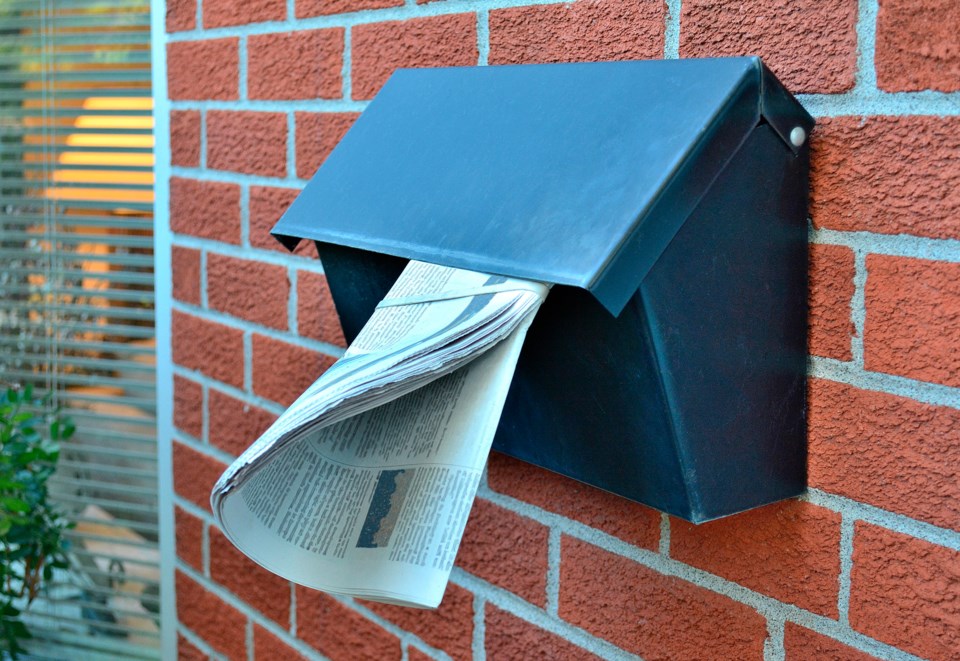In February 2024, after Bell Media announced 4,800 job cuts across Canada, Premier David Eby spoke passionately about the need for people to get “accurate, impartial, reliable information in an age of disinformation and social media craziness.”
As a longtime news publisher, I know that 81% of Canadians turn to newspaper content each week for that accurate, impartial, and reliable information. So, we don’t have an audience problem. What we have is an advertising problem.
Since the founding of the Halifax Gazette in 1752 — government advertising had always been an important source of revenue for news businesses. It allowed us to invest in journalists who produce fact-based, fact-checked reporting that Canadians rely upon.
In more recent years, we’ve seen those government dollars disappear. By way of example, the federal government reports that during fiscal year 2022 to 2023, it spent more than $86 million on advertising. Of that, less than $1 million went to all print publications in the country combined.
So, where did those millions go? The answer is largely to American tech giants like Facebook, Instagram and Google, among others.
Canadians are rightly concerned about protecting our economy and our sovereignty in the face of threats and misinformation coming from the U.S. One of the most effective ways to counter misinformation and to protect our Canadian culture and identity is to have commercially viable and fiercely independent Canadian journalism.
The question is: how do we pay for it? One of the most effective ways would be for governments — federal, provincial, and municipal — to set aside a minimum of 25% of their advertising spend for trusted Canadian news brands.
There are two examples that prove this is working. A year ago, Ontario’s Progressive Conservative premier, Doug Ford, directed that 25% of his government’s advertising spending, including that of Ontario’s Crown corporations, be set aside for news publications. I can tell you from the publishers that I speak with in Ontario, this made an immediate and meaningful difference to many news titles.
Five years ago, former New York City mayor Bill de Blasio, a Democrat, mandated that city agencies allocate at least 50% of their print and digital advertising to community and ethnic media.
According to The Center for Community Media at CUNY, “The impact of this policy cannot be overstated: In its first five years, it injected more than $72 million into the local community media sector. This helped critical information reach New Yorkers who rely on community media as their primary source of news, and added an important source of revenue for these outlets.”
The not-for-profit Rebuild Local News found that advertising set-asides, done right, have the following benefits:
First, they can provide substantial revenue to local news organizations and help community journalism thrive.
Second, it is money the government is already spending — not new money — so it does not require enlarging state or local budgets or raising taxes.
Third, government messages can reach a full range of residents, including those who may not be using larger media.
Fourth, as advertising, it is payment for a service rendered, not a subsidy per se.
Finally, advertising in community news helps government be more effective by reaching audiences through community and ethnic publications that are more trusted in their communities.
According to a recent study, advertising in trustworthy environments lead to a 25% lift in brand rating. News publishers in aggregate are seen as 35% above the baseline level of trust across information environments. And local news publishers see an additional 16% gain in perceived trustworthiness among local audiences, so newspapers are a highly effective way for the government to reach British Columbians.
We recommend British Columbia adopt a minimum 25% set-aside for government advertising, as well as for Crown corporations like BC Hydro, BC Transit, and British Columbia Lottery Corporation, to help preserve local journalism jobs and keep local and community newspapers open. And those journalists keep communities and residents informed, so they can effectively participate in democratic processes.
It would also send an important signal to private sector advertisers about keeping ad dollars here in B.C., rather than sending them to Big Tech behemoths in California, whose algorithms amplify misinformation and disinformation.
Premier Eby should direct his officials to spend the province’s advertising dollars in towns like Merritt, British Columbia instead of Mountain View or Menlo Park, California.
It’s time to support the home team by buying locally.
Peter Kvarnstrom is a Director with the BC and Yukon Community News Media Association and is publisher of the Coast Reporter, in Sechelt, B.C.



